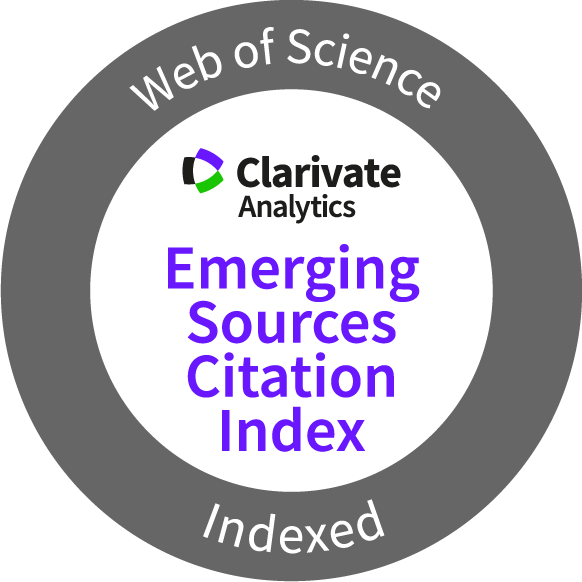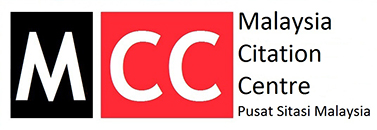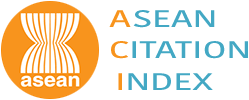Melissopalynological Analysis and Plant Preferences of Stingless Bee, Heterotrigona itama (Hymenoptera: Apidae) at The Malaysian Agricultural Research and Development Institute (Mardi), Serdang
Keywords:
Florak resources, Heterotrigona itama, Honey authenticity, Melissopalynology, PollenAbstract
Melissopalynology plays a pivotal role in ecological studies by identifying floral sources for honeybee nutrition and contributes to a better understanding of plant-pollinator interactions. It is essential for biodiversity monitoring, conservation efforts, and assessing the quality and authenticity of honey products based on pollen analysis. This study investigates the melissopalynological of honey samples collected from stingless bee species Heterotrigona itama (Hymenoptera: Apidae) at the Malaysian Agricultural Research and Development Institute (MARDI). A total of 17 flower samples and 10 mL of honey were collected from one beehive and further analyzed using a light microscope. The analysis identified eight pollen types from eight distinct plant species from the honey sample. Clematis crispa was the most prominent, representing 21.74% of the total pollen count, followed by Combretum indicum (17.39%) and Cucumis sativus (17.39%). Lagerstroemia speciosa contributed 13.04%, Ageratum conyzoides and Averrhoa bilimbi each accounted for 8.70%, while Ipomoea purpurea and Clitoria ternatea contributed 8.70% and 4.35%, respectively. The results highlight the floral preferences of H. itama bee at MARDI. This comprehensive melissopalynological analysis contributes to biodiversity monitoring and conservation efforts by providing a better understanding of the floral resources used by stingless bee species in the MARDI ecosystem.
Downloads
Metrics
References
Adnan, W.N.A.W.M., Jamian, S., Adam, N.A., Shilan, M.S.T., Samsudin, S.A. & Puan, C.L. 2021. Foraging activities of stingless bees, Geniotrigona thoracica and Heterotrigona itama (Apidae: Meliponini) in relation to wet and dry seasons in Selangor, Malaysia. Serangga, 26(4): 152-160.
Agashe, S.N. & Caulton, E. 2009. Pollen and spores: application with special emphasis on aerobiology and allergy. Science Publishers, Enfield. 376 pp. DOI: https://doi.org/10.1201/b10256
Azmi, W.A., Tse Seng, C. & Solihin, N.S. 2016. Pollination efficiency of the stingless bee, Heterotrigona itama (Hymenoptera: Apidae) on chili (Capsicum annuum) in greenhouse. Journal of Tropical Plant Physiology, 8(1): 1–11.
Azmi, W.A., Zulqurnain, N.S. & Ghazi, R. 2015. Melissopalynology and foraging activity of stingless bees, Lepidotrigona terminata (Hymenoptera: Apidae) from an apiary in Besut, Terengganu. Journal of Sustainability Science and Management, 10(1): 27-35.
Basari, N., Ramli, S.N. & Khairi, N.S.M. 2018. Food reward and distance influence the foraging pattern of stingless bee, Heterotrigona itama. Insects, 9(4): 138. DOI: https://doi.org/10.3390/insects9040138
Benedick, S., Gansau, J.A. & Ahmad, A. H. 2021. Foraging behaviour of Heterotrigona itama (Apidae: Meliponini) in residential areas. Pertanika Journal of Tropical Agricultural Science, 44(2): 485–502. DOI: https://doi.org/10.47836/pjtas.44.2.13
Bisrat, D. & Jung, C. 2022. Roles of flower scent in bee-flower mediations: A review. Journal of Ecology and Environment, 46: 75. DOI: https://doi.org/10.5141/jee.21.00075
Bogdanov, S. & Martin, P. 2002. Honey authenticity: a review. Mitteilungen aus Lebensmitteluntersuchung und Hygiene, 93: 232–254.
Buchmann, S.L. & Nabhan, G.P. 1996. The forgotten pollinators. Island Press, Washington, D.C. 292 pp.
Erdtman, G. 1963. Palynology. In: Advances in Botanical Research, J.K. Krebs (Ed.). Academic Press, London and New York. pp. 149–208. DOI: https://doi.org/10.1016/S0065-2296(08)60181-0
Faegri, K. & Iversen, J. 1989. Textbook of pollen analysis. John Wiley & Sons, 328pp.
Gela, A. 2017. Evaluating the toxicity effect of Euphorbia contifolia on honey bees (Apis mellifera) at field condition. International Journal of Ecotoxicology and Ecobiology, 2(4): 145-152. DOI: https://doi.org/10.11648/j.ijee.20170204.12
Gerten Née Papiorek, S., Junker, R., Alves-dos-Santos, I., Melo, G., Neto, L., Sazima, M., Wolowski, M., Freitas, L. & Lunau, K. 2015. Bees, birds and yellow flowers: Pollinator-dependent convergent evolution of UV-patterns. Plant Biology, 18: 123-134. DOI: https://doi.org/10.1111/plb.12322
Ghazi, R., Zulqurnain, N.S. & Azmi, W.A. 2018. Melittopalynological studies of stingless bees from the east coast of peninsular Malaysia. In: Pot-pollen in stingless bee melittology, M. Foster (Ed.). Springer, Cham. pp. 77–88. DOI: https://doi.org/10.1007/978-3-319-61839-5_6
Ghosh, S., Jeon, H. & Jung, C. 2020. Foraging behaviour and preference of pollen sources by honey bee (Apis mellifera) relative to protein contents. Journal of Ecology and Environment, 44(1): 7. DOI: https://doi.org/10.1186/s41610-020-0149-9
Helbling, A., Peter, C., Berchtold, E., Bogdanov, S. & Müller, U. 1992. Allergy to honey: relation to pollen and honey bee allergy. Allergy, 47(1): 41–49. DOI: https://doi.org/10.1111/j.1398-9995.1992.tb02248.x
Jaapar, M.F., Badrulisham, A.S., Zulidzham, M.S., Reward, N.F., Muzammil, N., Jajuli, R., Md-Zain, B.M. & Yaakop, S. 2021. Metabarcoding in diet assessment of Heterotrigona itama based on trnL marker towards domestication program. Insects, 12(3): 205. DOI: https://doi.org/10.3390/insects12030205
Jaapar, M.F., Jajuli, R., Mispan, M.R. & Ghani, I.A. 2018. Foraging behavior of stingless bee Heterotrigona itama (Cockerell, 1918) (Hymenoptera: Apidae: Meliponini). In: AIP Conference Proceedings. AIP Publishing, New York, pp. 020037. DOI: https://doi.org/10.1063/1.5027952
Jones, G.D. 2014. Pollen analyses for pollination research, acetolysis. Journal of Pollination Ecology, 13: 203–217. DOI: https://doi.org/10.26786/1920-7603(2014)19
Juhari, M.A.A.A., Talip, N., Amri, C.N.A.C., Basir, N.S.M., Rahman, M.R.A., Zohari, A.F., Ghazali, M.N. & Siam, N.A. 2021. Taxonomic implications of pollen of some species of the genus Pterospermum Schreb. (Malvaceae sl. subfam. Dombeyoideae). Acta Botanica Brasilica, 35(4): 495–502. DOI: https://doi.org/10.1590/0102-33062020abb0442
Majid, M., Ellulu, M.S. & Abu Bakar, M.F. 2020. Melissopalynological study, phenolic compounds, and antioxidant properties of Heterotrigona itama honey from Johor, Malaysia. Scientifica, 2020: 5214961. DOI: https://doi.org/10.1155/2020/2529592
Mohammad, S.M., Mar, N. & Zawawi, N. 2021. Stingless bee-collected pollen (bee bread): chemical and microbiology properties and health benefits. Molecules, 26(4): 957. DOI: https://doi.org/10.3390/molecules26040957
Nicholls, E. & Hempel de Ibarra, N. 2017. Assessment of pollen rewards by foraging bees. Functional Ecology, 31(1): 76-87. DOI: https://doi.org/10.1111/1365-2435.12778
Pospiech, M., Javůrková, Z., Hrabec, P., Štarha, P., Ljasovská, S., Bednář, J. & Tremlová, B. 2021. Identification of pollen taxa by different microscopy techniques. PLoS ONE, 16(9): e0256808. DOI: https://doi.org/10.1371/journal.pone.0256808
Ramadani, R.F., Raffiudin, R., Ariyanti, N.S., Biagioni, S., Treanore, E. & Behling, H. 2021. Stingless bee foraging behavior and pollen resource use in oil palm and rubber plantations in Sumatra. Jurnal Entomologi Indonesia, 18(2): 81–92. DOI: https://doi.org/10.5994/jei.18.2.81
Rodopoulou, M.A., Tananaki, C., Dimou, M., Liolios, V., Kanelis, D., Goras, G. & Thrasyvoulou, A. 2018. The determination of the botanical origin in honeys with over-represented pollen: combination of melissopalynological, sensory and physicochemical analysis. Journal of the Science of Food and Agriculture, 98(7): 2705–2712. DOI: https://doi.org/10.1002/jsfa.8764
Rosdi, I.S., Selvaraju, K., Vikram, P., Krishnan, K.T. & Mohammed, A. 2021. Melissopalynological analysis of forest honey from North Malaysia. Journal of Tropical Resources and Sustainable Science, 4(2): 128–132. DOI: https://doi.org/10.47253/jtrss.v4i2.621
Shamsul Bahri, A.R. & Samsudin, S.A. 2015. Microscopy observation on pollen from foraging activity of Indo-Malayan stingless bee species (Heterotrigona itama) in Besut, Terengganu. Malaysian Journal of Microscopy, 11: 1–6.
Suhaizan, L., Norezienda, A., Shamsul, B., Nurul, F.I. & Iffah, H. 2017. Composition and identification of pollen collected by stingless bee (Heterotrigona itama) in forested and coastal areas of Terengganu, Malaysia. Malaysian Applied Biology Journal, 46(3): 227–232.
Wahyuningtyas, R.S., Halwany, W., Siswadi, S., Hakim, S.S., Rahmanto, B., Lestari, F., Basiang, H.A., Alamsyah, M.S., Susianto, A., Buwono, D.C., Suryanto, E., Effendy, M.M., Prianto, E., Fahrudin, Aqili, I.K.A., Warhamni, Yusuf, M. & Suriani. 2021. Variation of kelulut (Heterotrigona itama) habitat landscapes in South Kalimantan. IOP Conference Series, 918(1): 012004. DOI: https://doi.org/10.1088/1755-1315/918/1/012004
Zetter, R. 1989. Methodik und Bedeutung einer routinemäßig kombinierten lichtmikroskopischen und rasterelektonenmikroskopischen Untersuchung fossiler Mikrofloren. Courier Forschungsinstitut Senckenberg, 109: 41–50.
Published
How to Cite
Issue
Section
Any reproduction of figures, tables and illustrations must obtain written permission from the Chief Editor (wicki@ukm.edu.my). No part of the journal may be reproduced without the editor’s permission
Funding data
-
Ministry of Higher Education, Malaysia
Grant numbers FRGS/1/2021/WAB02/UPM/02/3




















